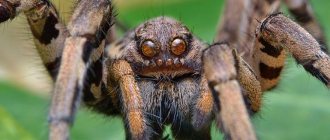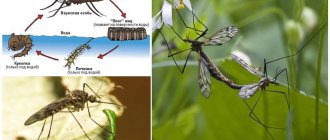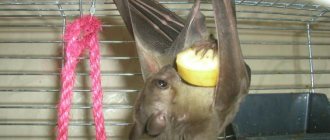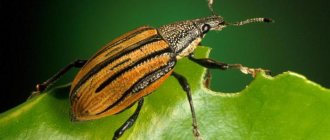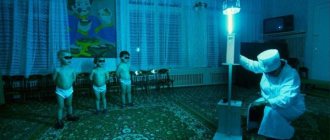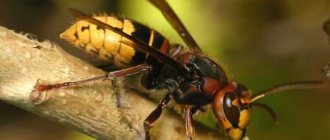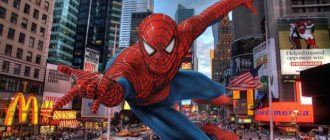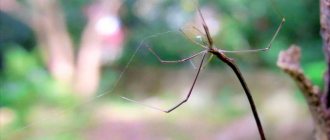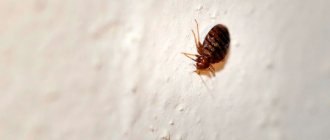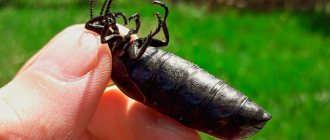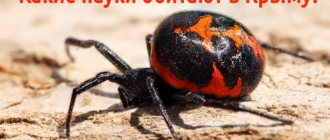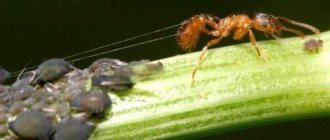Some people don't even realize how highly organized creatures ants are. A person is far from matching their hard work, endurance, and ability to adapt to life in different conditions. In fact, a civilization is developing under our feet with strict rules, hierarchy, division of responsibilities and cities with numerous underground passages.
Blood Red Ant (Slave Master)
These small, inconspicuous-looking insects are weak alone, but when they are in a colony, they are able to act so unitedly and in concert that they resemble one living organism with strength. The life of an ant colony is studied by myrmecologists; thanks to their painstaking work, science has learned many interesting facts about ants.
№10
Ants have a caste system in which responsibilities are divided. Thus, the queen is the founder of the colony and her role is only to lay eggs.
All worker ants, as in the case of bees, are female. They take care of the queen, the offspring, look for food, protect the colony and dispose of waste.
The fate of the future queen depends only on how she will be fed in the larval stage. If the larva is given a lot of protein, then it will become a queen in the future. If you feed less squirrel, it will become an ordinary worker ant.
Interesting facts about ants
Ants are one of the most highly organized insects on the planet, so it is not surprising that the structure of their life and everyday life is of interest not only to the scientific world, but also to ordinary people. The civilization of ants is often compared to ours, because their hierarchical system is extremely complex, and some even believe that these insects are ahead of humans in terms of development. Hundreds of books have been written about these amazing insects, dozens of films have been made, but what interesting facts do we know about ants? 1. Surprisingly, these insects are able to gain experience and learn not only from their own mistakes and successes, but also from observing other insects, learning important lessons from this. Scientists note that this group of insects is perhaps the only one of its kind. Researchers call this experience interactive learning, and it would be nice for people to adopt a similar process and follow the lifestyle of all living beings living on the planet.
2. The magnetic field of our planet is important not only for people, but also for ants. Recently, scientists have found that they are able to navigate the terrain using this natural source of protection for the planet, so they do not need any compasses or GPS navigators.
3. People often eat things that may seem completely inedible at first glance. For example, in Mexico there is a rather unusual but popular snack, which consists of several types of ants, or rather their eggs and larvae. It is interesting that only local species are used for preparation, and the name of this gastronomic delight is “escamoles”.
4. The structure of the bodies of ants, or rather their necks, allows them to carry loads over vast distances, and the weight of such luggage can be five thousand times greater than the insect’s own weight. They can safely be called one of the most hardworking insects on the planet.
6. It was possible to develop an antidote against the poison of the bulldog ant, but it is not always possible to administer it on time to people who have been attacked by these aggressive insects. The Myrmecia species is one of the largest ants in size, and they are most often found in the tropics, Western and South Australia.
7. Paraponera clavata is another species of ant that is known for delivering painful bites to humans. The pain syndrome may persist throughout the day. Bullet ant - this species received this name for a reason, but because of the comparison with the pain between its bite and the pain from a gunshot wound. In some tribes they are used for the initiation procedure of future men.
8. Earlier it was said about the high self-organization and distribution of roles in the Muravlev society. These insects can be farmers of sorts, growing a special type of mushroom that they then eat. Other workers milk aphids and graze them on special “farms.” There are also food warehouses that help them survive the winter period. There are nannies and guards who guard the queen's eggs, as well as warrior ants.
9. The size of insects is small and it is not always possible to get over obstacles, but for this they can build special bridges from special bodies that help their relatives move from one branch to another, as well as overcome water obstacles.
10. The queen ant is universally respected and her lifespan reaches up to twenty years, although ordinary individuals can live from several weeks to three years. The queen herself only lays eggs and feeds, while special nannies are involved in raising and caring for the larvae.
11. If slavery was abolished in human society quite a long time ago, then some species of ants practice a slave-owning way of life, using for this other species, which they abduct as larvae, and then force to work for the benefit of their tribe. Convenient, nothing to say!
12. It is believed that ants not only lived during the time of dinosaurs, but are also one of the most ancient insects on our planet. But if giant dinosaurs could not survive to our time, then ants perfectly adapt to changes in living conditions and can survive even severe natural disasters.
13. Scientists do not know all the species of these insects living on Earth, but now there are already more than fourteen thousand of them, and every year new species are discovered.
14. Argentine ants form one of the largest colonies. The area they occupy exceeds six thousand square km, and the number of individuals exceeds 1,000,000,000. But other species are also involved in creating supercolonies and federations. This method of self-organization allows them to control vast territories.
15. Among scientists there is a term for the total biomass of animals on the planet, which is occupied by each specific species. So, ants are not large in size, but their percentage of the total biomass is from 10 to 20 percent, just think about these numbers! Size doesn't always matter.
16. As for the number of individuals in one colony of these insects, there can be either a million individuals or only about 10-20. There are frequent cases of war between families, as well as unions of colonies where the maternal anthill is dominant. The bonds between relatives in such colonies are extremely strong, and federation is the highest achievement in the population of these insects.
17. Colonies of ants can distinguish their own individuals from others by smell. The sense of touch of these insects is often compared to the sense of smell in dogs, only for this they use special sensory organs located on the antennae. Ants have rather poor eyesight, but their sensitivity to smells compensates for this. If for some reason an individual loses its antennae, then the usual way of life is disrupted and it is impossible to find the way to its anthill.
18. The size of the largest species of these insects can reach five centimeters, and the smallest are only one millimeter. The largest insects are from the genus Dorylus, and the smallest discovered species are fire ants, but they are so warlike that they do not allow larger species to live in peace. Males of the species Wasmannia auropunctata are capable of cloning themselves even if the gene pools do not mix.
19. Some people believe that termites and ants are members of the same species, but this is actually not the case. If for termites the closest relatives are cockroaches, then for ants they are bees and wasps, which is very interesting. Some hundred and ten to 130 million years ago, they resembled wasps or bees in appearance, but then they evolved to the appearance we are familiar with.
20. If we consider the ratio of one person to ants, then the proportion will be one person to a million of these insects. If they suddenly decide to conquer our civilization, they can overcome us in numbers, since there are more than 10 quadrillion of them on the planet.
21. Dietary supplement E236 is made with formic acid, and it was obtained in the 17th century by a scientist named John Ray. If the concentration of the substance is quite high, then nylon, nylon, and other types of polymers can be dissolved in it. It is not only used in the food and medical industries, but also in cosmetology, making ointments and creams based on it for hair growth and eliminating acne.
22. If we compare the speed developed by ants in one second with the distance that a person travels, then our species should move at a speed of 55 kilometers per hour, which is an unattainable goal for us.
23. It’s not for nothing that ants are considered one of the most intelligent creatures inhabiting our planet. Their brain consists of more than 250 thousand cells, which is why they were able to create entire federations, and the number of their individuals numbers quadrillions of insects.
24. This type of insect is one of the most favorite delicacies of badgers, which lower the box into the anthill and wait until the ants stick around it, after which it swallows the prey.
25. Not all species build anthills and live in the same territory throughout their lives. There are so-called nomadic ants that carry the queen, eggs, larvae and food supplies to other territories. It’s difficult to say why they can’t sit in one place, because the queen should be comfortable.
26. When a boy is initiated into a man in some African tribes, a special glove is placed on his hand, inside of which there are dozens of ants, whose bites are extremely painful. There are frequent cases of death during initiation, but for representatives of such tribes this is quite common. If you couldn’t survive ant bites, then what about adulthood?
27. Most often, ordinary workers among ants are females whose reproductive system is underdeveloped. Interestingly, normal females and males can have wings, but workers do not. But even despite this fact, a group of workers occupies a dominant place in the hierarchy of these insects.
28. The habitat is very diverse, and representatives of different species can be found throughout the planet, but the exceptions are the coldest places on Earth, as well as remote islands.
29. Myrmecology is the name of a special branch of science whose specialists study this type of insect. Recently, people have become very interested in everything that happens in the colonies and federations of these tiny insects.
30. Performing complex and multi-step tasks among ants became possible thanks to communication using antennae and a special language. It is difficult to say how long it took evolution to develop this tool, but the achievement is one of the main ones among ants.
31. If we take the small Côte d'Ivoire as an example, its territory is home to more than 70 colonies, in which there are more than two billion insects.
32. There are three eyes on the bodies of ants, which allow them to learn about the level of illumination in a room or open space, as well as compound eyes made of many small lenses, which are responsible for other vision of the environment, but this does not allow them to see well.
33. The mandibles of some species can open almost 270 degrees, and when closed they resemble the flaps of a trap.
34. Almost all ant midges have special hooks on their legs that allow them to easily move even on non-vertical surfaces.
35. The protective cocoons of the larvae arise from a special substance produced by them. Its composition resembles silk.
36. Males die after mating with a female, and the female mates only once in her life, and throughout the rest of her life she is fertilized thanks to sperm reserves, which she gradually spends on fertilization.
37. Most ant species have two stomachs in their bodies. If the first is used for their own feeding, then thanks to the second they can feed other individuals from the colony.
38. There is a dangerous type of fungus that can take control of an ant's body, making it look like a zombie. The fungus gradually multiplies in the body, because the ant stops in one place, and if the concentration of the fungus increases significantly, this leads to the explosion of the insect's head.
39. Ants are able to survive for a long time even under water, because. Floods often occur, during which they are able to close their spiracles.
40. The body color of some species is almost transparent, so they can take on the color of the food they swallowed. And if we are talking about protection, then some ants can shoot at enemies with protective acid produced by their bodies.
These were not all the interesting facts that people know about ants. These insects are amazing, and their developmental system deserves respect; people have a lot to learn from them!
№11
Once the queen has created a colony, her work is not complete. She continues to lay eggs, thereby maintaining the existence of the colony. The lifespan of the uterus in some cases can reach 30 years. As for workers (women), their life expectancy can reach a year. Male ants are the least fortunate. Their lifespan rarely exceeds 1 week.
Ant: description
The body of an ant consists of 3 main parts, clearly separated from each other - this is the head, which is connected to the chest and abdomen using a thin bridge in the form of a waist. All three parts are covered with a chitinous shell. The eyes of ants consist of a large number of lenses, but they do not allow you to get a good image, but only allow you to react to movement. On top of the head there are 3 additional simple eyes. With the help of 6 thin legs armed with claws at the end, ants are able to move on both horizontal and vertical surfaces. On the ant's head you can see antennae, which serve as organs of touch. With their help, insects detect odors, air fluctuations, and soil vibrations.
Ants mainly live by smell, since by smell they identify their relatives, determine the location of food, give danger signals, etc. Ants can secrete poison or formic acid, which allows them to defend against natural enemies. In addition, ants bite and it hurts very much.
The size of insects depends on the species, as well as on the functions that are intended for all members of the colonies. Therefore, their size ranges from 1 mm to 3 cm. It is characteristic of some species that the size of female individuals is larger than the size of working ants. Females grow wings, which disappear after the fertilization process. Different types of ants also differ in their color patterns. Therefore, there are ants of various colors.
TOP 10 INCREDIBLE FACTS ABOUT ANTS
Good to know
Continuing to list interesting facts about ants, it is worth noting a number of interesting nuances:
- According to rough estimates, the total mass of all these insects living on Earth approaches 22% of the weight of all biological material on the planet.
- As a result of mating, the fertilized winged female, in need of nutrients, independently tears off and eats her own wings, after which she begins the process of laying eggs.
- Ants have a biological navigation system with which they are able to navigate the easiest routes to food, as well as find their way back to the anthill. The operation of this system is based on pheromone activity. This also explains the tendency of ants to move in a line.
- The lifespan of an ant does not exceed 9-10 weeks.
- The basis of communication of these insects is a system of tactile contacts and sound signals produced by the crackling of their paws and antennae.
- Some ants demonstrate the skills of great military strategists. An entire colony can be conquered by introducing a parasitic queen into it, which kills their native queen, absorbs her smell and begins to produce larvae of its own species. They are gradually displacing the native inhabitants of the colony.
- Some species of ants have not changed at all over millions of years of evolution. An example is the honey ant. It is completely identical to its ancestor who lived during the time of dinosaurs.
- Ants are capable of punishing guilty relatives. If a “worker” repeatedly appears in an anthill with nothing, he himself can be used for food. Or expel from the colony.
- Formic acid has antiseptic properties. It is also able to repel parasitic insects.
In fact, you can still list many interesting facts from the life of ants. But the ones above are considered the most entertaining. However, even after getting acquainted with them, many are surprised - such small creatures, but they are of such great interest.
How does an anthill work?
Ants are social insects and their life activity is somewhat reminiscent of human life, where society consists of people of various professions.
Their home (anthill) has a unique structure, which only the mind can do. For example:
- Ants are engineers and builders who form their nest through tunnels and other communications.
- In the society of ants, there are soldiers who protect the anthill from attacks by natural enemies, and also help to capture other territories.
- Doctor ants monitor the health of working individuals and also perform operations, relieving individuals of injured legs.
- Nurse ants control the development of larvae.
- Foraging ants are busy collecting and storing food, distributing it into special storage areas.
- Farmer ants are busy breeding aphids, cicadas, copperheads and scale insects. They look after them and also “milk” them, obtaining a tasty liquid.
- Leaf-cutter ants are busy collecting and identifying leaves, after which colonies of fungi grow from them. There are also ants - fungal growers, who use both insects and feces to grow mushrooms.
- Harvester ants are busy collecting seeds from various plants.
- Carpenter ants are busy collecting juices secreted by various plants.
- Gravedigger ants practice moving their deceased relatives to a place that can be called a cemetery.
- These are not all professions that allow an ant colony to survive in natural conditions.
Pheromones in the life of insects
An important role in the life of insects is played by glands that secrete various substances; with the help of some, for example, pheromones, they communicate. For example, foragers fix the food they discover with the help of pheromones, and mark the road until all the food ends up in the anthill (as soon as this happens, they stop marking the road with pheromones, and the smell dissipates).
This method allows the ants to cope with unexpected obstacles: if an obstacle suddenly appears on the way, the foragers begin their work. Having found a new path, they mark the road to the anthill, and its relatives begin their journey along the laid route.
Another interesting fact about the ant is its ability, with the help of pheromones, to communicate about the family during the exchange of food (what it currently needs, for example, what kind of food or the need for work in the nest).
Also speaking about the ant, it should be borne in mind that each of them has glands that they use for defense and attack (they are poisonous and almost all species have a sting). For example, some glands produce an acidic secretion, while many of the poisons they produce are characterized by the presence of complex compounds in combination with allergenic proteins. If a black worker ant finds itself in trouble, in order to protect the nest, it commits suicide: as a result of a specific muscle contraction, its abdomen ruptures and the secretion of the gland, which contains substances that glue the enemy, is sprayed out in all directions.
Physical signals
Naturally, insects can communicate with each other not only with the help of pheromones, but also with sounds (some species chirp using abdominal segments), as well as touches (for example, begging for food). There are two opposing opinions: some scientists are convinced that they are absolutely deaf, others categorically disagree with this.
However, it is known for sure that insects sense the vibration of solid bodies very well, and some species definitely make sounds while at the pupal stage. For example, a black ant that has not yet been born communicates its social status to working nannies.
Danger
Not all insects are dangerous, but among them there are species that can not only cause significant damage to human health, but also kill. A striking example is stray ants.
Huge, with well-developed jaws, blind, they constantly roam, sweeping away everything in their path. Their main habitat is Equatorial Africa.
When intelligence reports that stray ants will soon pass through some settlement, people hastily leave their homes. If someone forgets a pet, it will be found lifeless upon arrival.
The only plus is that as they move, stray ants also destroy such unpleasant creatures as rats, mice, cockroaches, bedbugs and others.
Another species that poses a deadly threat is the bullet ant. Just 30 bites per 1 kg of human weight - and death is inevitable.
Capable of taking “prisoners” and forcing them to work for themselves
Not many people know that in the northeastern United States there are species of ants that constantly raid other colonies and take them captive .
This species is called Protomognathus americanus. The ants kill all the adults in the colony and then take the larvae and eggs with them. They raise and feed them as if they were their own.
In one colony there can be up to 70 such slaves. Since ancient times they have been leading the image of slave owners. As soon as slave ants begin to emit their peculiar smell, their owners kill them or stop caring for them.
Nutrition
It can be said about ants that almost all of them are predators, scavengers, and also feed on plant foods (adults eat carbohydrate foods, larvae eat protein foods). They find food not only on the ground, but also an ant on a tree in search of food is a common occurrence. For protein food, they eat invertebrates, mainly insects: they pick up corpses, hunt and even raise livestock (aphids).
They get carbohydrate food from honeydew: it is given to them in abundance by their cattle and aphids (except that aphids secrete a special liquid, which red, red and black ants eat with pleasure, and the aphids themselves act as meat). They also feed on seeds, plant sap, nectar, and mushrooms (they often grow the mushrooms they need on their own).
They take all the prey to the anthill, where they distribute it among themselves (they never eat on the side). There are species that have a process in the esophagus, nicknamed the “social stomach”: in it, insects store food during transportation, and, having delivered it to the place, remove it, and then distribute it among the ants.
Each ant colony has its own smell
Each ant has its own specific smell . This helps him communicate with other relatives. Each ant family will immediately feel whether it is a stranger next to it or an insider.
Thus, the smell helps insects look for food and warn of impending danger. The same goes for an ant colony. Each of them has its own unique smell. An “alien” will not be able to pass through such barriers.
Types of ants
Scientists still debate which order the ant belongs to. The difficulty of classification is associated with the huge number of twin species and all kinds of hybrids. The ant family includes 21 to 26 subfamilies, 54 tribes, 378 genera, and more than 13,000 species.
Like their closest relatives - wasps, ants are part of the order Hymenoptera, but because of their originality they were separated into a separate superfamily. Each species has its own characteristics, both in appearance and in its way of life, and differ in biology, organization and behavior.
Internal structure
The internal organs of the ant, which are located in the abdomen, are also unique in their own way. So the esophagus ends not with the stomach, but with the so-called goiter. Insects use it to collect food. If it is necessary to treat its relative, the ant regurgitates some of the food from this cache. This is especially true for honey ants, which are also called barrel ants.
Nervous system
The insect nervous system includes several interconnected ganglia. Thus, the suprapharyngeal ganglion, which acts as a brain, is responsible for the thinking and behavior of insects. It is much larger in relation to the body. The working ant has a particularly large brain; in females it is slightly smaller, and in males it is the smallest.
Circulatory system
The blood of ants is a clear liquid - hemolymph. It is driven throughout the body by the spinal vessel – the heart. It is a muscular tube that runs along the entire back.
Respiratory system
Respiratory system of tracheal type. The trachea opens outward through stigmas (spiracles), which are located on each abdominal segment (on a stalk at the base of the scale).
The Queen can live up to 30 years
Many scientists believe that anthills are similar to human cities. Each such place has its own distribution of responsibilities.
“Soldier” ants protect the queen (the queen of all ants), as well as other insects from enemies. Simple “workers” are laying out the housing and expanding it. Others simply collect food.
It is worth noting that ants can unite as one to save their queen. Surprisingly, the female has nothing to do with the name. Her duty, which she firmly fulfills, is reproduction and nothing more.
The queen can live much longer than her subordinates who live with her under the “same roof.” Queen ants can live up to 30 years .
They form “living bridges” from their bodies to overcome obstacles
An amazing fact remains that many species of ants are capable of creating living “bridges” from their own bodies . This helps them cross a river or pond. These include a genus of ants called Eciton.
Once upon a time, an experiment was conducted at one of the universities that proved that some species are even capable of sacrificing themselves for the sake of other brothers.
The largest colony covers an area of 6 thousand km2
Argentine ants live in Europe, as well as the United States, and form a huge colony. It is known as the world's largest ant colony. Its territory covers 6 thousand km2 . But, to the surprise of many, it was created by a man.
Initially, this species was found only in South America, but thanks to people it has spread everywhere. Argentine ants have previously created large colonies. But this species is considered a parasite, as it brings great discomfort to animals and crops.
The ants are all friendly towards each other, which is why they can calmly be nearby. Their colonies can stretch up to several tens of kilometers.
These hardworking insects
Black, red, red ants belong to a family of insects that belongs to the superfamily Antidae from the order Hymenoptera, which also includes wasps, bees, ichneumon wasps, sawflies and gall moths. In total, there are more than 13 thousand species of ants, most of which live in tropical latitudes (for comparison: 1,150 species live in the Palearctic, about three hundred in Russia).
The number of this family, according to various sources, ranges from 10 to 25% of the biomass of all terrestrial creatures. True, their weight is extremely small. For example, in the Amazon forests there are 800 million ants per square kilometer, while in total all forest ants weigh half as much as the rest of the inhabitants of the area.
Red, black and red ants are distributed throughout the world. It is worth noting that not only forest and garden ants, but also ants in the house are a common occurrence. They are not found except in cold Antarctica and several islands located far from the continent.
Interesting facts about raccoons91694.714
Insects build anthills wherever they can, using mainly soil and plants for construction. Their nests can be seen everywhere: on the ground, under stones, in logs, underground; if they happen to settle in a house, they can build an anthill there too. An anthill should never be built in areas with dead insects, as this indicates the presence of disease or other danger.
Such good adaptability is largely due to excellent social organization, the ability to use various resources and maneuverability in their life: if necessary, they will easily change their place of residence.
